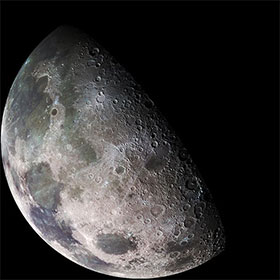Moon Dust: NASA Exploring Causes Of The Moon’s Glow
Moon dust will be vacuumed up by NASA’s new LADEE orbiter, a probe that will help determine the cause of the moon’s ability to glow in the night sky.
The LADEE (Lunar Atmosphere and Dust Environmental Explorer) will deploy on NASA’s latest lunar mission on Sept. 6 to help scientists learn more about the composition of Earth’s only moon. While it’s known that the moon has an extremely thin atmosphere, what causes its “dust fountains” isn’t known. There’s the unsolved theory of whether or not electrostatic levitation is causing the high-altitude debris to streak across the sky.
There are a number of reasons why it's important for there to be analysis of moon dust, according to NASA spokesperson Brian Day, reported MSN. Namely, knowing more about moon dust will help the space station determine how best to set up observations from the moon’s surface. Since moon dust could be potentially harmful, scientists need to become more knowledgeable about its properties.
"You don't want to be exposed to it and you definitely don't want to breathe it," Day said. "It could get into the joints of your space suit; it could attach itself to all kinds of instrumentation."
The LADEE orbiter measures 6.5 feet long and weighs more than 700 pounds. When operating, a hatch will lower and suck in samples of moon dust that will later be studied by lunar specialists. Before the samples are ready to study, ionization will take place within the LADEE that will then create an electrical signal.
Prior to the lunar explorer entering the moon’s orbit, it will have to travel through space for 30 days. Once it makes its way into the orbit, it will collect data for a period of about 100 days.
– Chelsea Regan
Get Uinterview's FREE iPhone App For Daily News Updates here.
Get the FREE Uinterview iPad app here and watch our videos anywhere.
1 Comments
Leave a comment
RELATED ARTICLES
Get the most-revealing celebrity conversations with the uInterview podcast!








like Susan responded I'm amazed that some people able to profit $4338 in a few weeks on the internet. did you read this webpage
www.JAM30.com